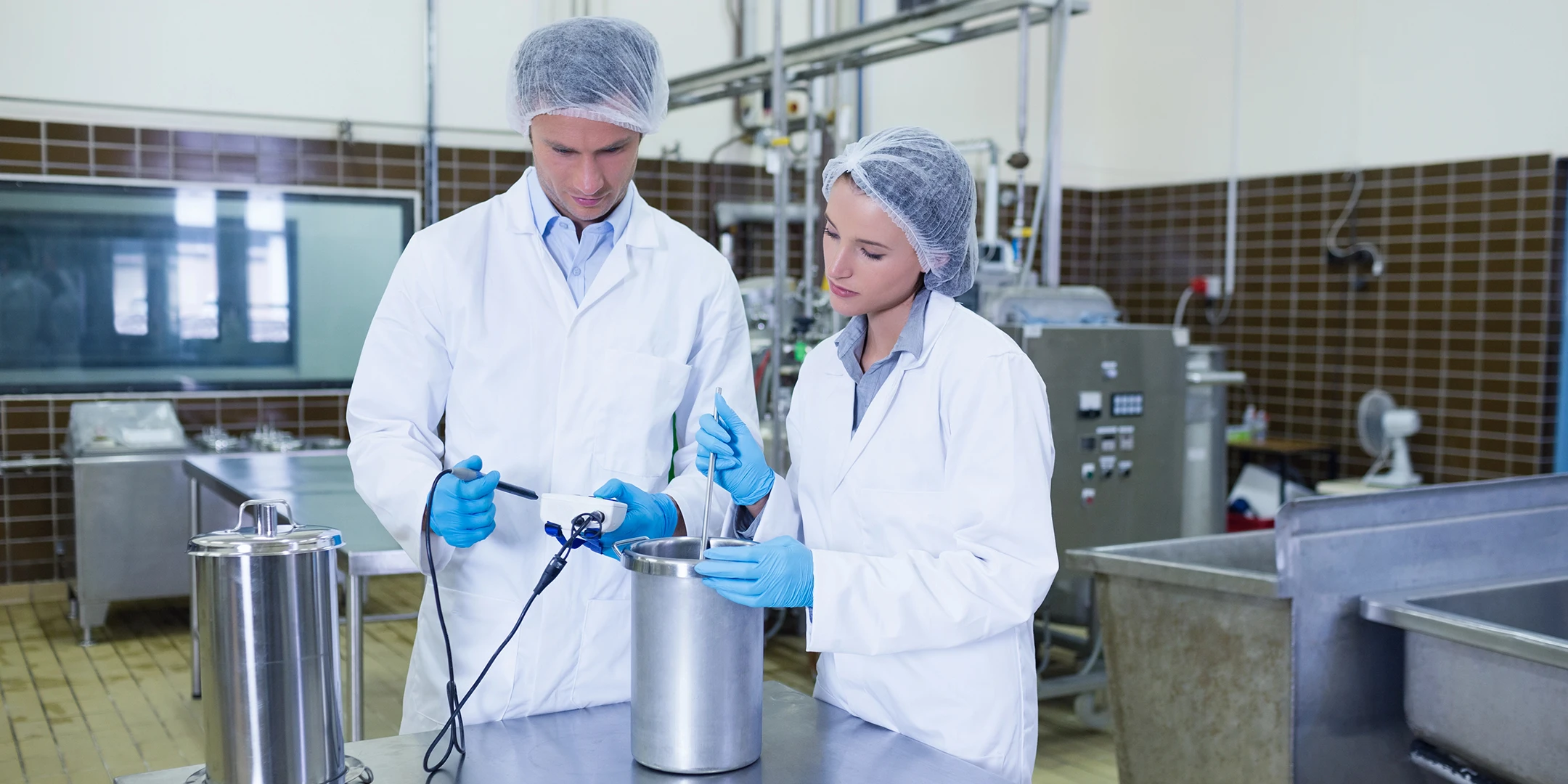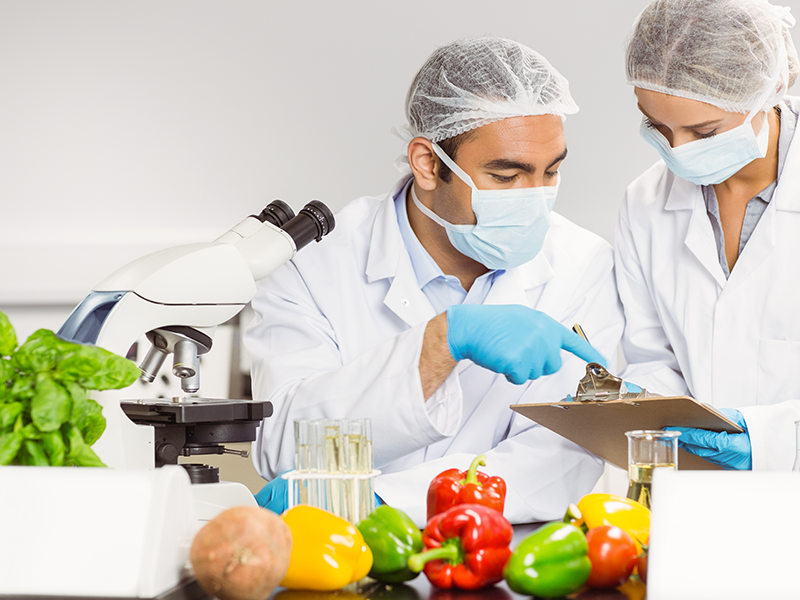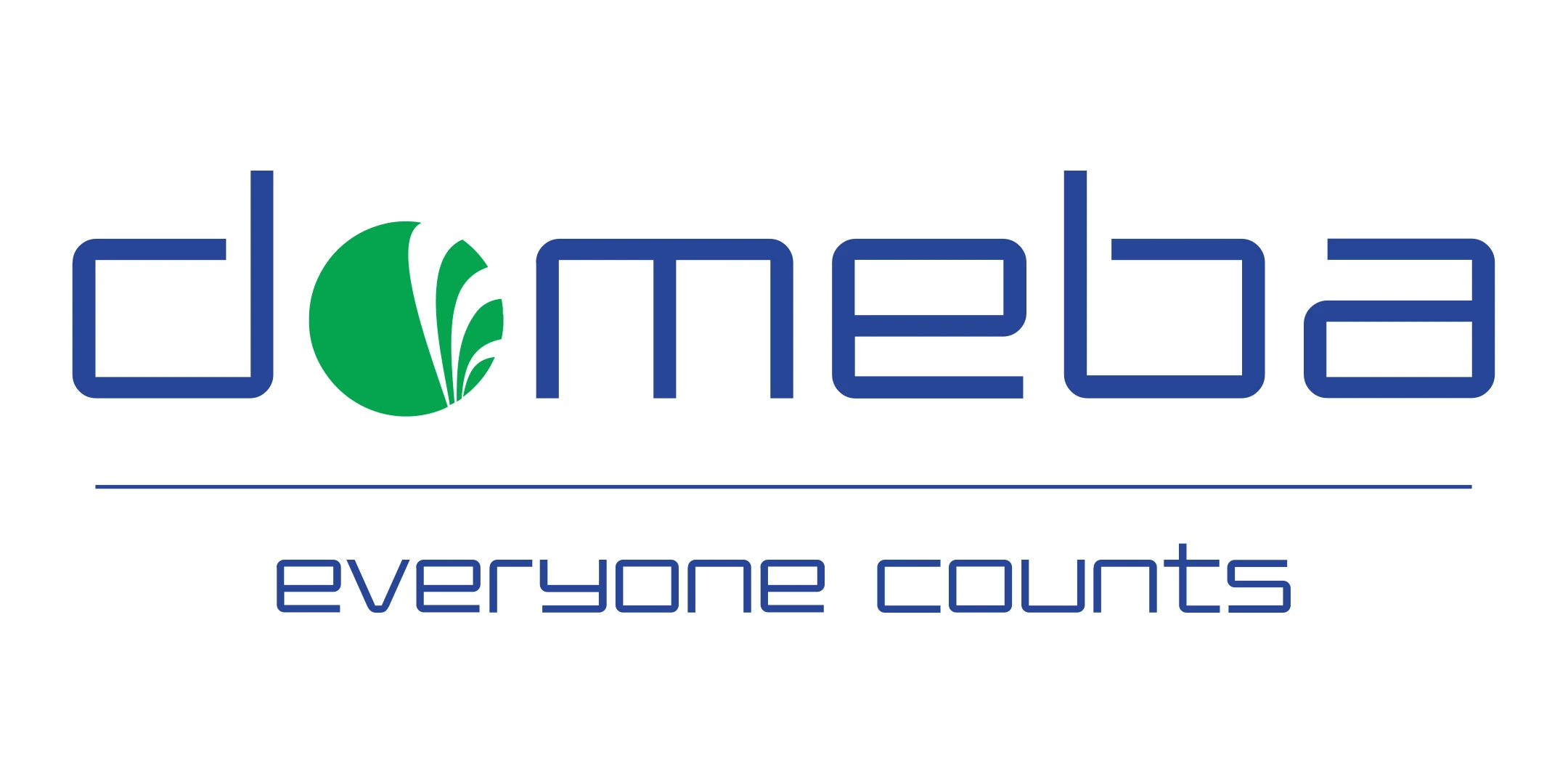
HACCP: Meaning, Guidelines and Implementation in Practice
According to lebensmittelwarnung.de, the majority of recalls and warnings published in Germany concern food products. Microbiological contamination and foreign bodies are the most common causes. For food manufacturers, such an incident can cause a significant loss of trust and, of course, put your customers at risk.
To prevent this, the implementation of a HACCP concept is mandatory. Learn what this means and how best to approach this task in our article!
Please note: This text refers to German laws and regulations. They may differ in other countries.
What does HACCP stand for? – Definition and meaning
HACCP stands for “Hazard Analysis and Critical Control Points” and originates from food safety. It describes a hazard analysis to identify critical control points. It’s important to note that “control” in this sense doesn’t mean monitoring, but rather control. While monitoring processes is also one of the tasks of the HACCP concept, the primary focus is on implementing measures to control food production.
The primary goal of the HACCP concept is to protect consumers from hazards caused by errors in food production. These can include, for example, lack of hygiene measures or foreign bodies in food.
HACCP guidelines and legal requirements
Is HACCP required by law?
The legal basis of the HACCP concept is prescribed in Article 5 of the Food Hygiene Regulation 852/2004. This regulation requires food businesses to establish, implement, maintain, and continually adapt a HACCP or self-monitoring system.
Who is responsible for carrying out the HACCP hazard analysis in the company?

The primary responsibility lies with management. However, this management should establish a HACCP team with representatives from various departments.
What role does DIN 10524 play?
DIN 10525 “Food hygiene – work clothing in food processing establishments” deals, as the name suggests, with the selection, handling and cleaning of work clothing in food production.
In this context, the work clothing used must comply with HACCP principles. They distinguish between three different risk groups. You can read more details in this article.
Advantages of HACCP certification
HACCP certification offers you many benefits, including:
Last but not least, you secure the trust of your customers.
Learn HACCP in practice
Watch our free webinar recording on HACCP and gain valuable knowledge! (In German language)

Understanding the HACCP concept
The HACCP concept is a self-monitoring system used by companies and is part of the general principles of food hygiene. The company owner is responsible for its implementation. The main objectives of the HACCP concept are hazard analysis and assessment, as well as the assessment of the consequences for consumers.
The seven principles of food safety
The HACCP concept is developed in seven steps:
1. Hazard Analysis:
First, all conceivable hazards must be identified and potential risks assessed. The goal of risk assessment is to identify and quantify health hazards at an early stage.
2. Determining Critical Control Points
The next step is to determine whether the control points are critical. Critical control points (CCPs) describe a process step at which a health hazard can be avoided or eliminated.
3. Establishing limit values.
Next, you define limit values for the CCPs (e.g., for temperatures or pH values). Failure to comply with these limits could result in harm to the customer’s health.
4. Monitoring Critical Control Points.
Next, define how you will monitor the limit values. Physical measurements such as pH or temperature values are best suited for this. Establish time intervals and specify who needs to be regularly informed about what.
5. Determination of corrective actions
In the event that the values of the critical control points cannot be met, you should define corrective actions at an early stage.
6. Verification Procedures:
Regularly review your HACCP concept. Also keep an eye on whether the measures have actually been implemented.
7. Records and Documents
It is important to carefully document all processes. This documentation allows you to demonstrate compliance with your due diligence, for example, during food safety inspections. A digital solution, such as iManSys’ document management, can provide optimal support in this regard.
Hazard Analysis HACCP: How to Identify Risks
To analyse the hazards, you should thoroughly examine the entire manufacturing process. This includes, for example, production, purchasing, storage, transportation, and even the warehousing of raw materials. Proceed systematically to ensure no critical point is overlooked.
Consider the following potential danger areas:
Biological hazards
e.g. pests, parasites, bacteria
Physical hazards
e.g. foreign bodies such as plastic or dust
Chemical hazards
e.g. allergens, residues of pesticides
How do you define critical control points (CCP)?
You can use the Codex Alimentarius as a basis for defining your critical control points. The Codex is a collection of international food standards from which you can derive appropriate control points.
Implementation of HACCP in the food industry
Role of technology in food safety
The industrial implementation of well-known processes such as heat treatment for the pasteurisation of beverages and milk or the sterilisation of canned goods, as well as modern processes such as the high-pressure treatment of packaged foods, make an important contribution to food safety.
Legal aspects of food safety
Food safety regulations and rules are complex. Important EU and international provisions include:
The various directives and laws are interlinked in the area of food safety.
Implementation of HACCP in the food industry
Developing a HACCP concept requires thorough preparation. Preparatory steps include:
- Appoint a reliable HACCP team.
- Describe processes and products.
- Compile a list of raw materials and ingredients.
- Create a process flow diagram.
- Ensure compliance with legal hygiene regulations.

Tags:
Diesen Beitrag teilen:
Weitere Blogbeiträge

iManSys becomes domeba
iManSys Becomes domeba: Everything You Need to Know About the Changes Big changes have been in development and are finally here! After years of success as iManSys, our software is […]

HACCP: Everything you need to know
According to lebensmittelwarnung.de, the majority of recalls and warnings published in Germany concern food products. Microbiological contamination and foreign bodies are the most common causes. For food manufacturers, such an […]

Leave a Reply